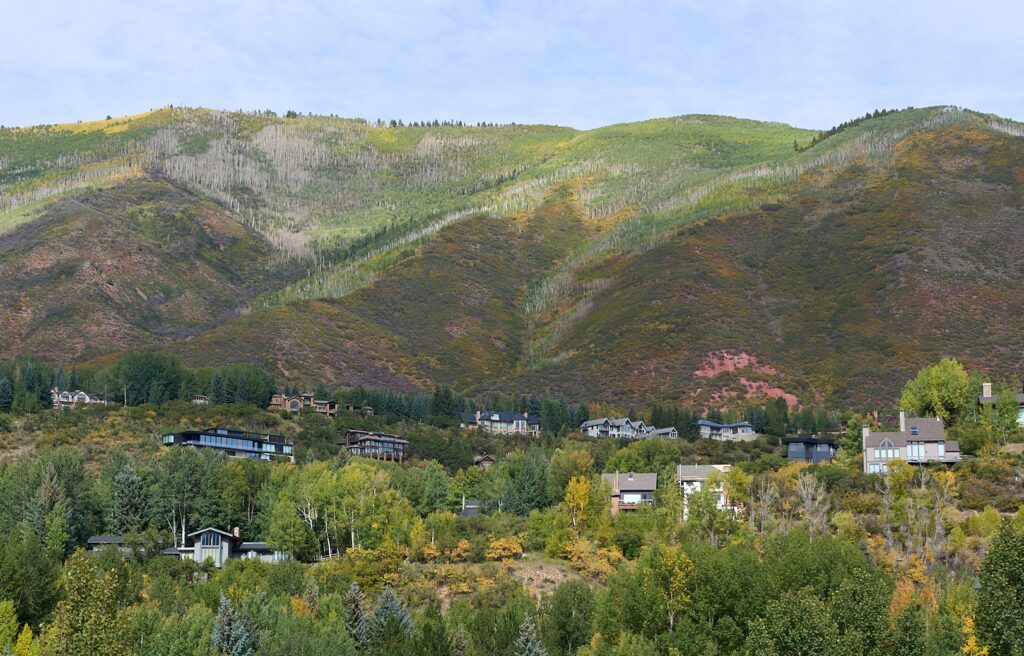Roaring Fork Valley Phenology | August 19, 2013
ACES Staff
August 20, 2013

Gaze up Smuggler Mountain toward Hunter Creek near the end of August and you may be surprised to see a patch of aspen trees beginning to turn color. This early turn happens every year, typically about a month ahead of most other aspens in the valley. Some call this area Early Gulch. I’m not sure of the source of the name, but it makes sense.
Aspens reproduce vegetatively, meaning that new shoots (trees) come up from a long-lived underground root system and form a grove that is all related. We count on Early Gulch to change first each year because the trees in the whole gulch are linked to a genetically-identical root system that started as an individual seedling. That original seedling and its living clones develop thier leaves earlier in the spring and lose leaves earlier in the fall compared to most other aspen groves.
Aspen Populus tremuloides, and other poplars such as cottonwoods, are part of the the Willow family, which are all diecious plants. Diecious is latin for “two houses” – when a plant is diecious this means that it is either a male or a female (one of the two houses). Males produce staminate catkins which are pendulous, pollen-bearing flower structures. Females produce pistillate catkins which contain the ovary and later the seed, often accompanied by a cottony transport tuft.
Since a grove/clone/patch/colony of aspens are all connected genetically, the trees we see in a group with the same development pattern (such as leaf out, flowering, or leaf change) are also either all male or all female. That means Early Gulch as a whole is either a boy or a girl. Anyone know which? Keep an eye up there this week to watch the early change, one of our first signals that autumn is about to fall on Aspen…
~ Jim Kravitz, Director of Naturalist Programs
Related Content

RFV Phenology: Green is out, yellow is in! Or is it?
Learn More
ACES // City of Aspen Open Space Birding: Marolt Open Space 9/5/2024
Learn More